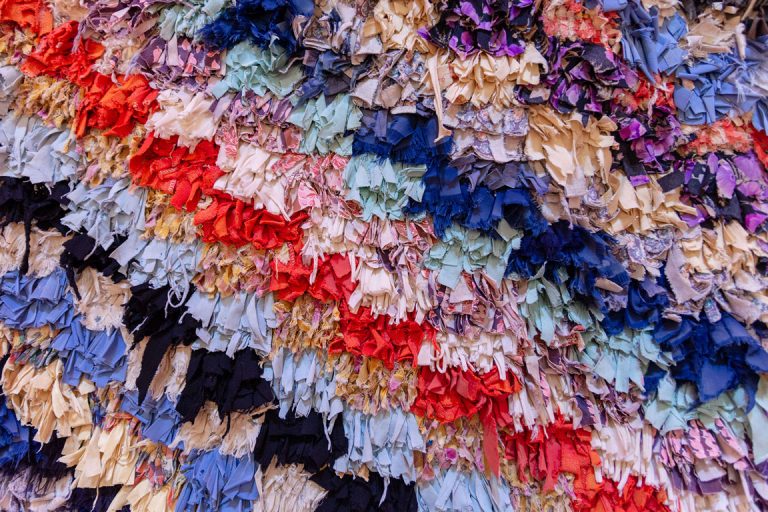Since the beginning of the climate emergency, the gold rush of brands to find sustainable solutions has begun: from regenerative cultivation to upcycling and the circular economy. The latest fashion goal, however, is the search for sustainable, recyclable and disposable materials.
Today, synthetic fibres dominate the textile scene, however a solution already exists. 100% natural, renewable and biodegradable: it is wool.
Why choose wool over other fibres.
- Wool is completely biodegradable.
All materials have their own rate of biodegradability, which is measured by the speed it takes for a substance to decompose through the action of external agents. Wool is a fibre composed entirely of keratin which, when decomposed by micro-organisms, not only does not pollute the soil but enriches it with nitrogen, carbon and sulphur.
Alert! This does not mean that wool degrades easily! Its decomposition only begins when it is buried in damp soil, which also means that wool does not accumulate in landfills. Furthermore, the anti-shrinkage treatments it undergoes during its processing do not produce microplastics, but in some cases accelerate the biodegradation process.
- Wool is a circular fibre.
Whether long or short, each virgin wool fibre is used to create new products, setting in motion its amazing circularity.
Animal fibres, such as wool, are recyclable through low-impact mechanical processes: pre- and post-consumer waste is in fact reconverted into new wool fibres through ‘fraying’, a process that does not involve chemicals and low water consumption. In opposition, synthetic fibres such as polyester require chemical processes and a lot of energy to be recycled.
After shearing, the fibres are classified according to fineness and length: the longest and most uniform ones undergo the ‘combing’ process, which produces extra-fine yarns, while the shortest ones, called noils or blousses, are used to create high quality wool yarns and fabrics. Even during the production phase, the scraps are recovered and reused as raw materials, sometimes even without further processing.
- Wool products are “hard-wearing”.
Wool is a naturally durable fibre, reason why the garments can remain in circulation for a relatively long period of time. It is estimated that the average longevity of a wool garment is between 20 and 30 years.
This reduces their environmental impact. Indeed, the frequency with which a garment is worn also influences its environmental impact. In support of this, wool not only does not produce microplastics, but also does not require many washes compared to garments made from other fibres, because it is smell and stain resistant. This saves water, energy and (often chemical) detergents for washing.
- Wool can be traced.
Since the production processes of almost every garment are now completely industrialised, it has become increasingly difficult to trace the origin of materials. However, traceability is important because it shows not only the origin of a material but also where it was processed.
It is a hidden ‘give for take’ that many brands are implementing because it ensures their transparency towards the world and the end consumer, who in recent years has become increasingly aware of social and environmental issues. Traceability and transparency in exchange for ‘cooperation’ from users to safeguard civil rights and the wellbeing of the ecosystem.
- Wool and ONU Goals.
A conscientious production of wool garments could, on a global level, contribute to the achievement of certain Sustainable Development Goals defined by the United Nations in Agenda 2030. An action programme that involves all countries of the world and that aims to put an end to some of the ‘scourges’ of today’s society, which concern the three dimensions (economic, social and ecological) of sustainable development.
Until a few years ago, the fashion industry, although polluting, was completely uninvolved in sustainable issues. Today, however, there is greater awareness, which has helped to redefine the positioning and responsibilities of this industry.
Starting with wool, in compliance with the standards, means ‘chasing’ some of the Sustainable Goals, including:
- “Decent work and economic growth”
- “Sustainable cities and communities”
- “Responsible consumption and production”
- “Climate action”
- “Life below water”
- “Life on land”
In the end, wool is a choice that, taking up the concept of fashion as ‘self-expression’, makes us all – suppliers, designers and consumers – active agents of global change, responsible and aware citizens.





